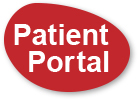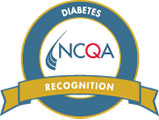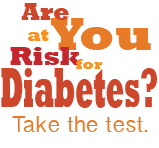To Buy Zofran Online Visit Our Pharmacy ↓
 Navigating Cancer Treatment: Zofran for Chemotherapy Side Effects
Navigating Cancer Treatment: Zofran for Chemotherapy Side Effects
Chemotherapy, a conventional cancer treatment, utilizes powerful drugs to target and destroy rapidly growing cancer cells. While it is effective in combating various types of cancer, chemotherapy can also unintentionally damage healthy cells, leading to a range of side effects. The most common of these include fatigue, hair loss, increased risk of infection due to lowered white blood cell counts, mouth sores, and changes in appetite. However, one of the most challenging side effects for patients to cope with is chemotherapy-induced nausea and vomiting (CINV), which can significantly impact quality of life and the ability to maintain proper nutrition during treatment.
The severity of these side effects largely depends on the type and dose of chemotherapy drugs used, as well as the individual's response. Some patients may encounter mild issues that are easily managed, while others may experience more severe side effects that can be debilitating. In an effort to improve patient comfort and ensure the continuation of treatment, healthcare providers frequently prescribe medications to alleviate or prevent the unpleasant side effects associated with chemotherapy, with particular focus on controlling nausea to help patients sustain their nutritional health and overall wellness during their cancer journey.
Zofran: the Go-to Medication for Nausea Relief
Zofran, generically known as ondansetron, is widely prescribed to combat the distressing side effects of nausea and vomiting often induced by chemotherapy treatments. Its efficacy in oncology settings has cemented its reputation amongst healthcare providers and patients alike. Preferred for its fast-acting relief, this medication allows patients to maintain a semblance of comfort during challenging treatment periods.
Administered either orally or intravenously, Zofran functions by blocking the chemicals in the body that trigger nausea and vomiting. Particularly effective for those undergoing highly emetogenic chemotherapy, this antiemetic has become a critical component in the standard supportive care regimens for cancer patients, aimed at improving their overall quality of life as they navigate through the intricacies of cancer treatment.
How Zofran Works to Ease Chemotherapy Discomfort
Zofran (ondansetron) is primarily utilized for its antiemetic properties. Its effectiveness lies in the mechanism of selectively blocking the serotonin 5-HT3 receptors, which are known to play a crucial role in inducing vomiting. When chemotherapy drugs trigger the release of serotonin in the small intestine, it stimulates the 5-HT3 receptors, leading to nausea and vomiting. By inhibiting this receptor activity, Zofran prevents the upstream signaling that initiates the emetic response in both the peripheral and central nervous system.
To further enhance patient comfort, Zofran is often administered before and after chemotherapy sessions to maintain a proactive defense against the onset of nausea. This preemptive approach allows patients to focus on their recovery without the additional burden of chemotherapy-induced nausea and vomiting (CINV). As CINV can compromise a patient's ability to receive necessary treatments, the role of Zofran is pivotal in ensuring the continuation and effectiveness of the chemotherapy regimen.
Navigating Dosage: Getting Zofran Intake Just Right
Determining the optimal dose of Zofran, generically known as ondansetron, is crucial in managing the nausea and vomiting often associated with chemotherapy treatments. The standard approach typically involves a health care professional calculating the dosage based on factors such as the patient's weight, the type and intensity of chemotherapy, and individual response to the medication. Zofran is usually administered before chemotherapy sessions to preemptively counteract nausea. However, the frequency and amount may be adjusted as treatment progresses to ensure the maximum comfort and minimum side effects for the patient.
Patients are advised to follow their prescription instructions meticulously, taking Zofran at the specified times to maintain consistent relief. They need to report any persistent or severe symptoms to their healthcare provider. It’s equally important to communicate about any other medications or supplements being taken concurrently to avoid potential interactions. Beyond the prescribed regimen, oncologists may provide supplemental doses to manage breakthrough nausea, ensuring that the patient's well-being is maintained throughout the treatment course.
Tips for Managing Zofran Treatment at Home
When taking Zofran at home, it's important to adhere to the prescribed schedule. This is because timing can be critical in preventing the onset of nausea and vomiting. Taking the medication before chemotherapy can help to minimize symptoms. Patients should also keep a record of when they take their medication and note any side effects. This log can be useful for healthcare providers to adjust treatment as necessary.
Storing Zofran properly is also a key part of managing treatment. The medication should be kept in its original packaging, away from moisture and heat, to maintain its efficacy. If a dose is missed, patients should contact their healthcare provider for advice instead of doubling up on the next dose. Maintaining open communication with healthcare professionals and following their instructions ensures the most effective management of chemotherapy-related nausea.
Real Patients, Real Stories: Zofran Success Anecdotes
Cancer patients often find solace in hearing from others who've walked the same challenging path. One such inspirational story comes from Sarah, a breast cancer survivor, who credits Zofran for allowing her to maintain some sense of normalcy during her rigorous treatment regimen. She recounts the unbearable nausea that would follow each chemotherapy session, which rendered her unable to tend to her basic needs. Introducing Zofran into her treatment plan changed everything for Sarah—her nausea subsided, and she was able to eat, sleep, and continue her day-to-day activities with significantly less discomfort.
Similarly, another testament to Zofran's efficacy is shared by David, a lymphoma patient recovering from strong chemotherapy cycles. He shares how the waves of nausea had left him debilitated, creating a sense of dread with every upcoming treatment. Once his oncologist prescribed Zofran, David found relief from the relentless nausea. With Zofran managing his symptoms effectively, David was able to focus on his recovery journey, spending quality time with his family, and even returning to his part-time work remotely, feeling grateful for the regained control over his life. These stories highlight the profound impact Zofran can have in improving the quality of life for those undergoing chemotherapy.
https://buynoprescriptiononlinerxx.com http://rxbio.com/images/milestones/png/ocuflox.html https://www.northwestmed.net/wp-content/uploads/2022/08/png/stromectol.html
![]()








 We are now located at
We are now located at


